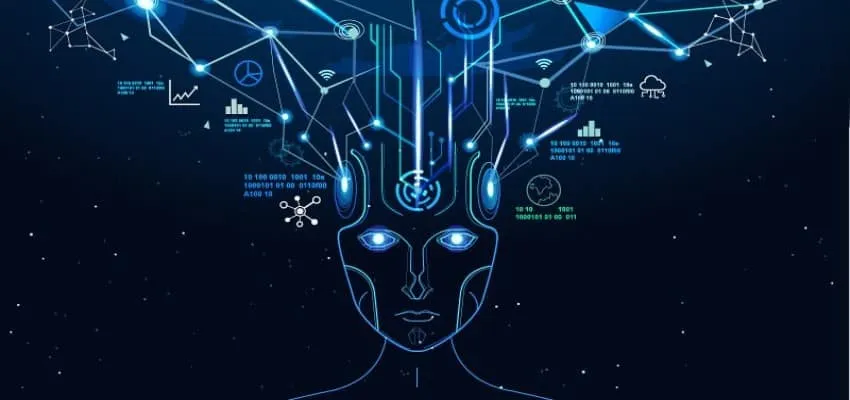Vision 2020: Reimagining India over the next decade through AI

Government bodies and private players are already collaborating to pilot AI-led applications, even in domains which had hitherto been relatively untouched by cutting-edge innovations; these include areas such as agriculture, education and healthcare. The results generated thus far are extremely encouraging and indicative of the critical role that the technology can play in driving large-scale transformations across industries and sectors. Talking about specific use-cases, we have the Ministry of Home Affairs is working towards deploying India’s first Intelligent Traffic Management System (ITMS) in New Delhi. Aimed at addressing the city’s perennial traffic woes, the deployment will leverage AI-based smart traffic signals to monitor, automate and streamline the flow of traffic flow. Similarly, the Ministry of Defence has its own AI Task Force, which is advising the government about the possible offensive and defensive applications to optimize its military strategy and further enhance India’s position as an emerging superpower.
USB4 is ready: Twice as fast, smaller, and hitting devices in 2020

USB4 is the next major version of the USB, which gains a major speed boost thanks to Intel licensing its Thunderbolt 3 protocol to the USB Promoter Group on a royalty-free basis. This group includes Apple, HP, Intel, Microsoft, and Texas Instruments. USB4 will enable 40Gbps speeds equivalent to Thunderbolt 3, which is currently found in high-end computers like the MacBook Pro and peripherals. That's twice as fast as the current USB 3.2. However, as noted by CNET's Stephen Shankland, many consumers are still using computers with earlier versions of USB that offer 5Gbps or 10Gbps. Thunderbolt 3's incorporation into USB4 should bring higher speeds to lower-end devices and peripherals. And those higher speeds will be useful for connecting multiple displays and getting data from external hard drives. The longer-term promise of the speedier USB4 is that device makers will stop using old rectangular USB-A ports and USB Micro B ports in favor of the newer USB-C connectors, which USB4 requires to work. The USB Implementers Forum told CNET that consumers could expect to see devices, including laptops, external hard drives, and dongles with USB4 support in the "second half of 2020".
Developer code reviews: 4 mistakes to avoid

Code reviews typically fall into one of two poor patterns. The first involves the reviewer not making any changes: "When there are no comments, that should terrify you," Presley said. "It leads to apathy—if you're rubber stamping, why do it at all?" The second is when a simple set of changes turns into a long, drawn-out process, when quick changes turn into inefficient meetings with too many people involved to actually solve problems, Presley said. "It's exhausting, and a waste of time for you and lots of other people," he added. The simple goal of code reviews is to find bugs early on in the process, since bugs cost more the later they are discovered, Presley said. Several case studies back this up, he explained: For example, IBM found that each hour of code inspection prevents about 100 hours of related work, including support at QA. And after introducing code reviews, Raytheon reduced its cost of rework from 40% of the project cost to 20% of the cost, and the amount of money spent on fixing bugs dropped by 50%, Presley said.
This issue is compounded with limited resources, including lack of sufficient budget and skilled professionals as well as a threat attack surface that is quickly expanding and becoming more sophisticated. Because of this, security leaders understand it is critical to have the right strategies in place as they face an arms race between the capabilities of attackers and their own defense postures.The global survey polled CISOs across various industries about the biggest challenges they’re facing and strategies they’re putting in place to address these obstacles. “The Forbes Insights survey echoes the primary challenges we hear directly from Fortinet customers and prospects. Today's CISOs are tasked with the challenge of allocating limited funds and resources to the highest-return cybersecurity projects which can range from breach detection to response. These C-level security leaders must maximize security with finite resources, all while balancing strategic leadership responsibilities and tactical issues. Through the Fortinet Security Fabric, Fortinet is providing end-to-end security so that CISOs can navigate a rapidly changing cyber threat landscape day in and day out,” said John Maddison, EVP of Products at Fortinet.
Those adopting a multi-cloud approach were far more likely to have suffered a data breach over the past 12 months, the study shows, with 52% reporting breaches compared with 24% of hybrid-cloud users and 24% of single-cloud users. Companies with a multi-cloud approach are also more likely to have suffered a larger number of breaches, with 69% reporting 11-30 breaches compared with 19% of those from single-cloud and 13% from hybrid-cloud businesses. “When it comes to ensuring resilience and being able to source ‘best-in-class’ services, using multiple vendors makes sense,” said Reed. “However, from a security perspective, the multi-cloud approach also increases exposure to risk as there are a greater number of parties handling an organisation’s sensitive data. This is exactly why an eye must be kept on integration and a concerted effort be made to gain the visibility needed to counter threats across all different types of environments.”
When properly designed and deployed, predictive analytics can deliver deep insights into an array of commonplace and unique network issues, helping operators handle everything from policy setting and network control to security, says Rahim Rasool, an associate data scientist with Data Science Dojo, a data science training organization. To tackle security issues, for instance, predictive analytics can use anomaly detection algorithms to sniff out suspicious activities and identify possible data breaches. "These algorithms scan the behavior of networks working in the transfer of data and distinguish legitimate activity from others," Rasool explains. "With predictive analytics systems, the vulnerabilities in a network can be detected before a hacker group does and, subsequently, a defense mechanism can be drawn out." Another way predictive analytics can help organizations is by comparing trends to infrastructure capabilities and alert thresholds. "Almost all signals have an upper bound and a lower bound that are a result of the infrastructure's capabilities," says Gadi Oren, vice president of technology evangelism at LogicMonitor, which operates a cloud-based performance monitoring platform.
Enterprise software will see the highest growth in 2019 and 2020 (9% and 10.9% respectively), while devices, communications services and data center systems will all recover somewhat in 2020 from declines in 2019, according to Gartner. The analyst firm sees the cloud spreading its tentacles further into the enterprise, encompassing areas like office suites, content services and collaboration services. "Spending in old technology segments, like data center, will only continue to be dropped," Lovelock said. ... IDC sees a 'natural cohesion' between traditional and new technologies: "Cloud and mobile enable rapid deployment and connectivity, while also cutting costs and complexity in legacy operations which allows businesses to focus on new digital innovation," says the analyst firm. Such synergies, along with the continuing need for professional services associated with the roll-out of digital transformation solutions, will mean that the impact of new technologies is "much bigger than revenues associated with discrete categories such as IoT sensors, 3D printers or drones," IDC says.
How to avoid CIO and CFO clashes over cloud spend

Much of the cloud budgeting issues can be traced back to a disconnect between IT and finance, according to the report, which ultimately hurts the business. The IT department is often unaware of the burden cloud budgeting has on finance, the report found: 51% of finance respondents said they occasional overspend on cloud resources, compared to 37% of IT respondents, who are less aware. Some 68% of finance respondents said they are alerted to overspend only after it's too late, whereas 80% of IT respondents said they are alerted before the overspend takes place, the report found. Collaboration between IT and finance in a formal reporting capacity remains rare, as only 28% of professionals surveyed said this happens in their organization, the report found. The CIO and CFO play key roles in any organization, but the two have historically faced challenges working together over budgets and technology investments. Budgets tend to be the largest point of friction, as those are not typically a strength of the CIO, Khalid Kark, US CIO program research leader at Deloitte, told TechRepublic. On top of that, many times CIOs are investing in assets that may not have direct ROI.
Settling the edge computing vs. cloud computing debate

The edge computing side that’s in the vehicle needs to respond immediately to changing data in and around the vehicle, such as an impeding crash or weather-related hazards. It does not make sense to send that data all the way to a central cloud server, where the decision is made to apply the brakes, and then back to the vehicle. By then you’ll have hit the semi. However, edge devices are typically much lower powered, with limited storage and compute capabilities. Deep learning processing and predictive analytics to determine the best approach to vehicle maintenance based on petabytes of historic data is best done on back-end cloud-hosted servers. See how that works? The edge computing market will continue to grow. A report on the topic, sponsored by software provider AlefEdge, pegs the size of the edge-computing market at more than $4 trillion by 2030. At the same time the cloud computing market will be 10 times that, and you’ll find the growth of both markets more or less proportional. Edge computing needs cloud computing, and the other way around. Indeed, public cloud computing providers will take advantage of the use of edge-based systems, providing small cloud service replicants, or smaller edge-based version of cloud services.
IoT security essentials: Physical, network, software

Where IoT is concerned, however, best security practices aren’t as fleshed out. Some types of IoT implementation could be relatively simple to secure – a bad actor could find it comparatively difficult to tinker with a piece of complex diagnostic equipment in a well-secured hospital, or a big piece of sophisticated robotic manufacturing equipment on an access-controlled factory floor. Compromises can happen, certainly, but a bad actor trying to get into a secure area is still a well-understood security threat. By contrast, smart city equipment scattered across a metropolis – traffic cameras, smart parking meters, noise sensors and the like – is readily accessible by the general public, to say nothing of anybody able to look convincing in a hard hat and hazard vest. The same issue applies to soil sensors in rural areas and any other technology deployed to a sufficiently remote location. The solutions to this problem vary. Cases and enclosures could deter some attackers, but they might not be practical in some instances. The same goes for video surveillance of the devices, which could become a target itself. The IoT Security Foundation recommends disabling all ports on a device that aren’t strictly necessary for it perform its function, implementing tamper-proofing on circuit boards, and even embedding those circuits entirely in resin.
Quote for the day:
Ineffective leaders don't react to problems, they respond to problems and learn. - Danny Cox




No comments:
Post a Comment